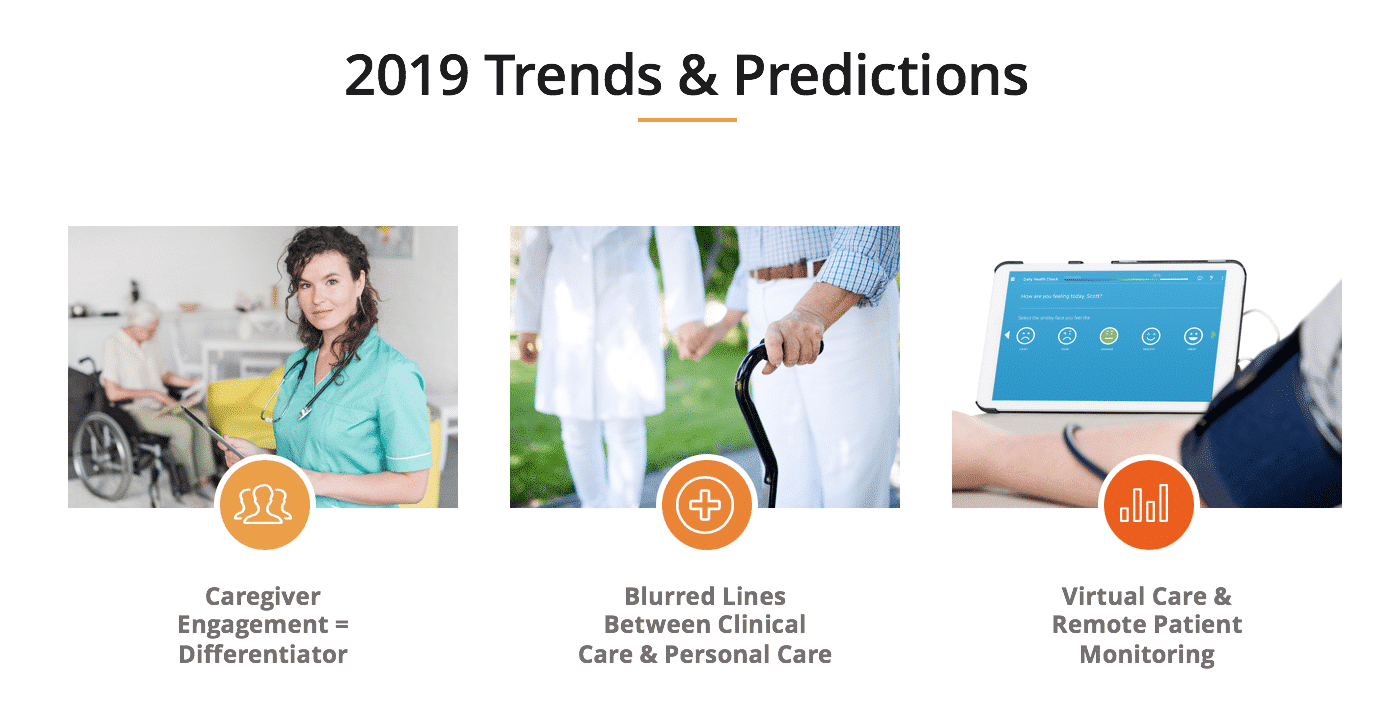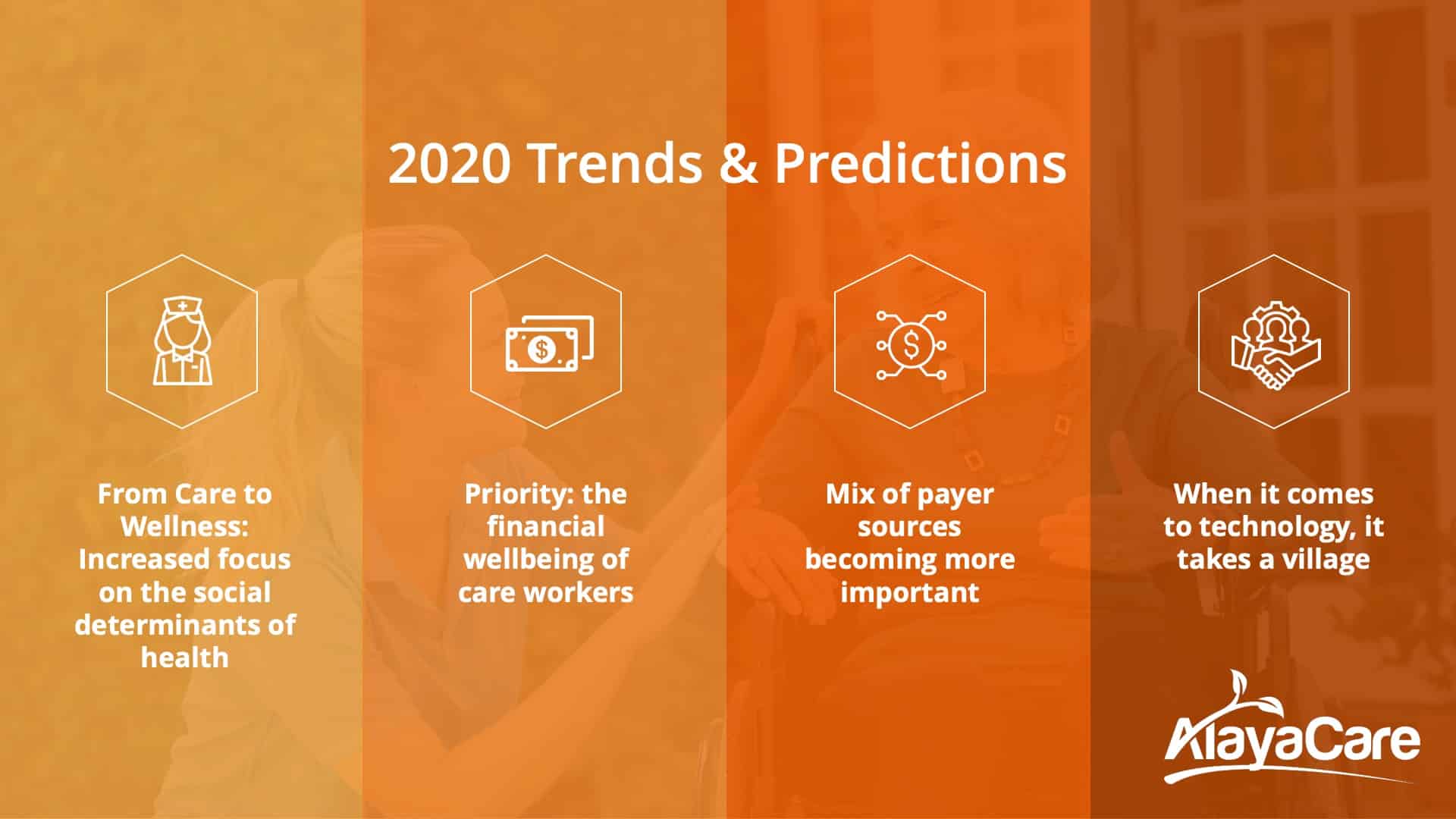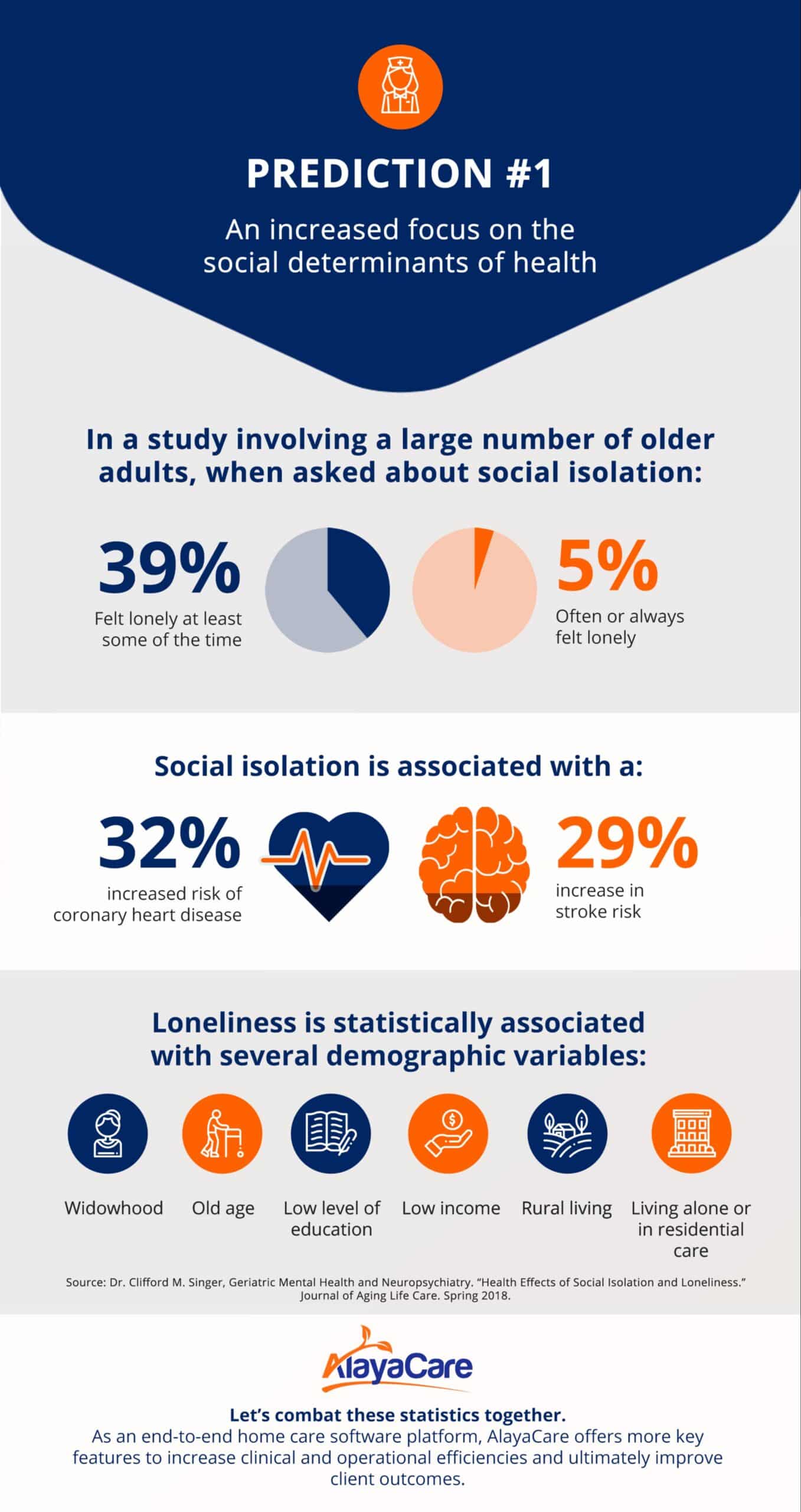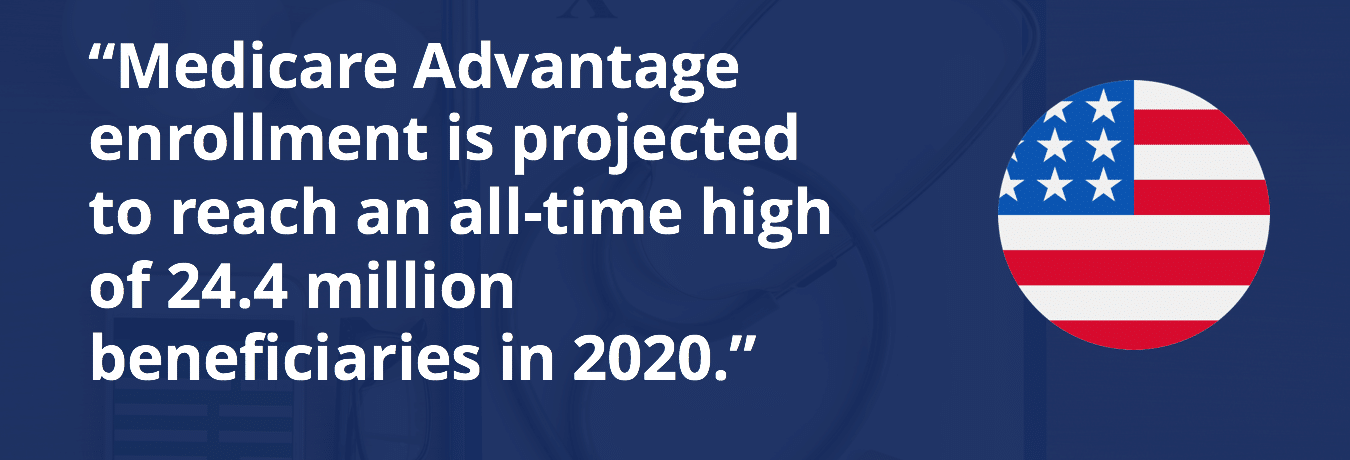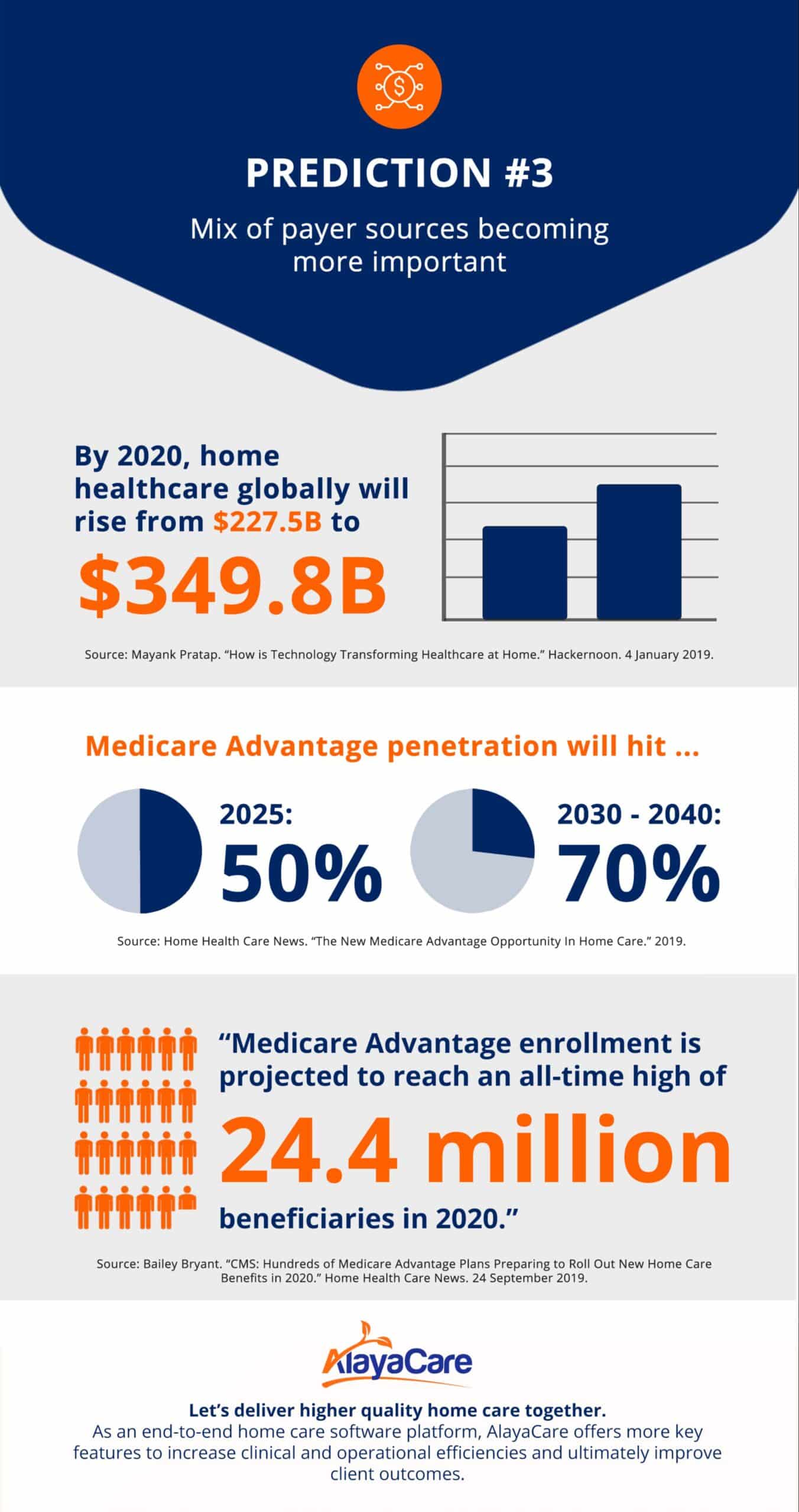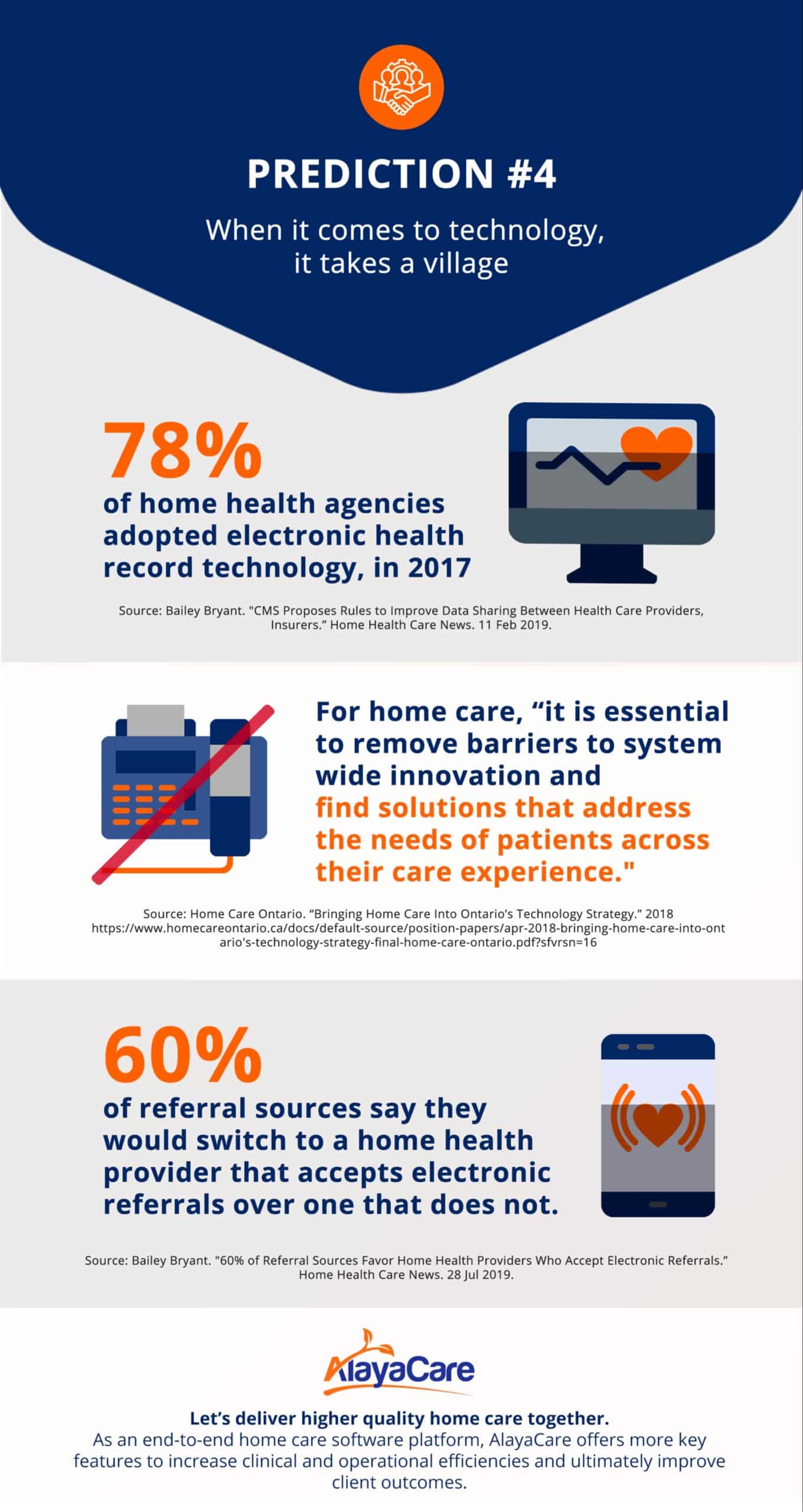Blog
4 Important Predictions for Home Care in 2020

As 2019 enters the home stretch and we look forward to the year ahead, it’s an opportune time to prepare for the issues and trends that will impact the home care industry. The first step, of course, is the forecast.
{{ script_embed(‘wistia’, ‘2v5caa0r0z’, ”, ‘inline,responsive’, ”wistia’, ‘2v5caa0r0z’, ”, ‘inline,responsive”) }}
A year ago, we accurately predicted that 2019 would be a year where caregiver engagement would be a key differentiator for agencies. We forecasted increasingly blurred lines between clinical care and personal care. And we foresaw that virtual care and remote monitoring, which long seemed to be just out of reach in the future, would finally start to be considered an important element of servicing home health care.
These themes will continue to be felt as we enter 2020. That said, the shift in perspective in eldercare from care to overall wellness will start to dominate the dialogue. The threat of a global recession may in fact prove to be a release valve for the ongoing home care labour shortages, and agencies will continue to diversify their payor sources in an effort to be resilient in a time of systemic change. Lastly, from an IT perspective, 2020 will be the year of the API, as providers large and small realize that it takes a village (of technology) to optimize their operations.
1. From Care to Wellness: an increased focus on the social determinants of health
In 2020, the conversation around social isolation being predictive of poor patient outcomes will really take root. This sentiment is trending for good reason, and health systems are beginning to organize around the truth embedded in it.
For example, the Royal Commission in Australia is investigating negative outcomes in aged care, and formalizing recommendations to enforce care in the context of patient goals. Similarly, the impending CMS rollout of a home care benefit for Medicare Advantage plans – previously reserved for nursing and therapy – shows that they too are dialed into the effectiveness of whole-person care.
Here at AlayaCare, we built our Care Plan 2.0 module to fit this new perspective. All clinical or non-clinical interventions are now dictated by a client goal. Taking it one step further, we are kicking off a project in AlayaLabs to use data science to recommend optimal care plans, which alerts clinicians when a client isn’t progressing as expected.
2. New strategic priority: the financial wellbeing of care workers
We know now that satisfied caregivers are directly tied to satisfied clients. A critical measure for caregiver satisfaction is having a consistent amount of work. With caregiver churn a serious challenge, our data shows that that consistency of hours is the single greatest predictor of retention.
Savvy agencies have begun experimenting with new strategies to attract and retain caregivers in this tight labour market. At Integracare, one of our clients in Toronto, they have built tools that ensure caregivers receive at least minimum hours, ensuring income stability. There are many technological partners, such as Even, that are now out to support caregivers in their financial wellbeing – a testament to this growing focus.
Home care continues to have a supply problem, not a demand problem. As some multinationals like Amazon and Walmart are paying employees a minimum of $15/hour in parts of the U.S. (a positive development, of course), delivering home care can be a harder job but with equal or even less pay.
As economists publish their increasingly gloomy outlooks for the global economy next year, one silver lining for the home care sector is that demand will stay strong even if overall retail employment demand subsides. What is true, regardless of shifting labour markets, is that investing in employee financial wellbeing is never a poor strategy when it comes to the clients they serve.
3. Mix of payer sources becoming more important
From Washington to Ottawa to Canberra to Wellington, we are continuing to see a major trend toward diversifying payer sources. Private pay agencies are courting third party payers and health authorities; public pay agencies are investing in private pay business lines. Some of this activity is being driven by a follow the money philosophy, but some is strategic as we exist in uncertain times. In the U.S., we increasingly watch private duty providers getting into Medicaid and long-term care insurance. Agencies looking to increase revenue cycle efficiency now have more options than ever before.
While Medicare-certified agencies are entering the personal care space in the U.S., system reforms in Ontario are at the forefront in Canada. The province is creating comprehensive health teams, through which service providers are working more directly with hospitals and other entities within the healthcare system. At the same time, private pay franchisees – who may have been locked out of the public pay market previously – are seeking opportunities to access public dollars through those health teams. In Australia, more aged care providers (traditionally funded under the Home Care Packages and the Commonwealth Home Support Programme) are getting into disability under NDIS. A rising tide of private pay agencies are performing publicly funded care indirectly by signing brokerage deals with package owners.
I am very bullish on the societal benefits of these trends. Private pay providers have traditionally excelled at customer experience while their public colleagues carry a data-driven view of patient outcomes. Who wouldn’t want the best of both worlds?
4. When it comes to technology, it takes a village
Each agency needs an IT infrastructure that sets them up for success in a rapidly changing industry. We’ve arrived at the point where an ecosystem of technology that works in sync is the best foot forward.
AlayaCare is an end-to-end solution for delivering home care – but we recognize that we can’t be the best in the world at collecting client and caregiver feedback. We aren’t the best at training caregivers. We can’t be the best at customer relationship management or human capital management on an enterprise scale. We can’t be the best at payment technologies.
That’s why we have enabled a cloud-based architecture that is ready for all companies who have perfected such tasks to integrate. This is the formula for success, to have multiple technological partners seamlessly working for an agency all in one space.
As we turn the page to a new decade, I believe the home care market will continue to grow in a robust fashion. Agencies must ensure their software is capable of growing right along with it. As always, I’d love to know your thoughts too.
